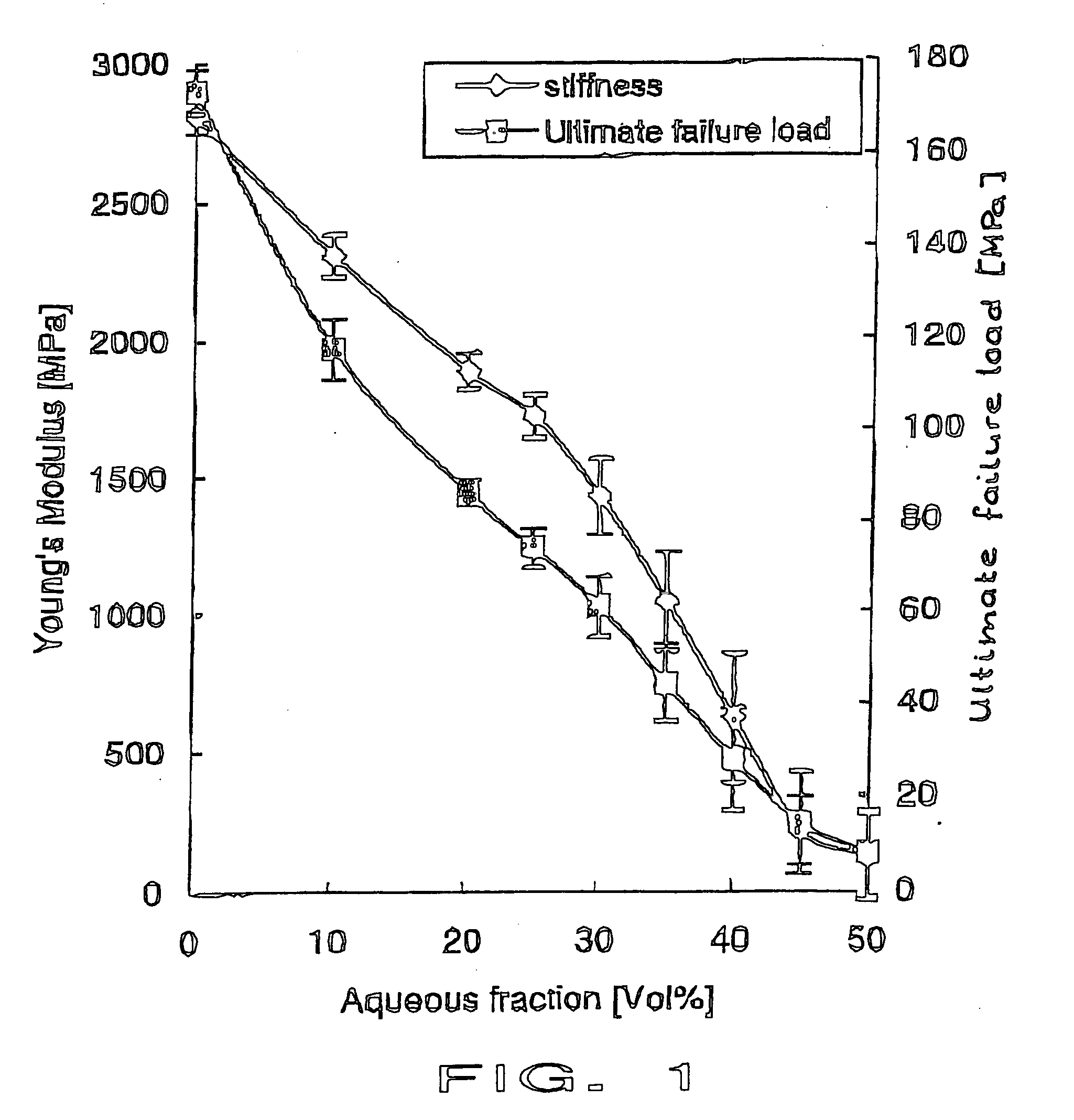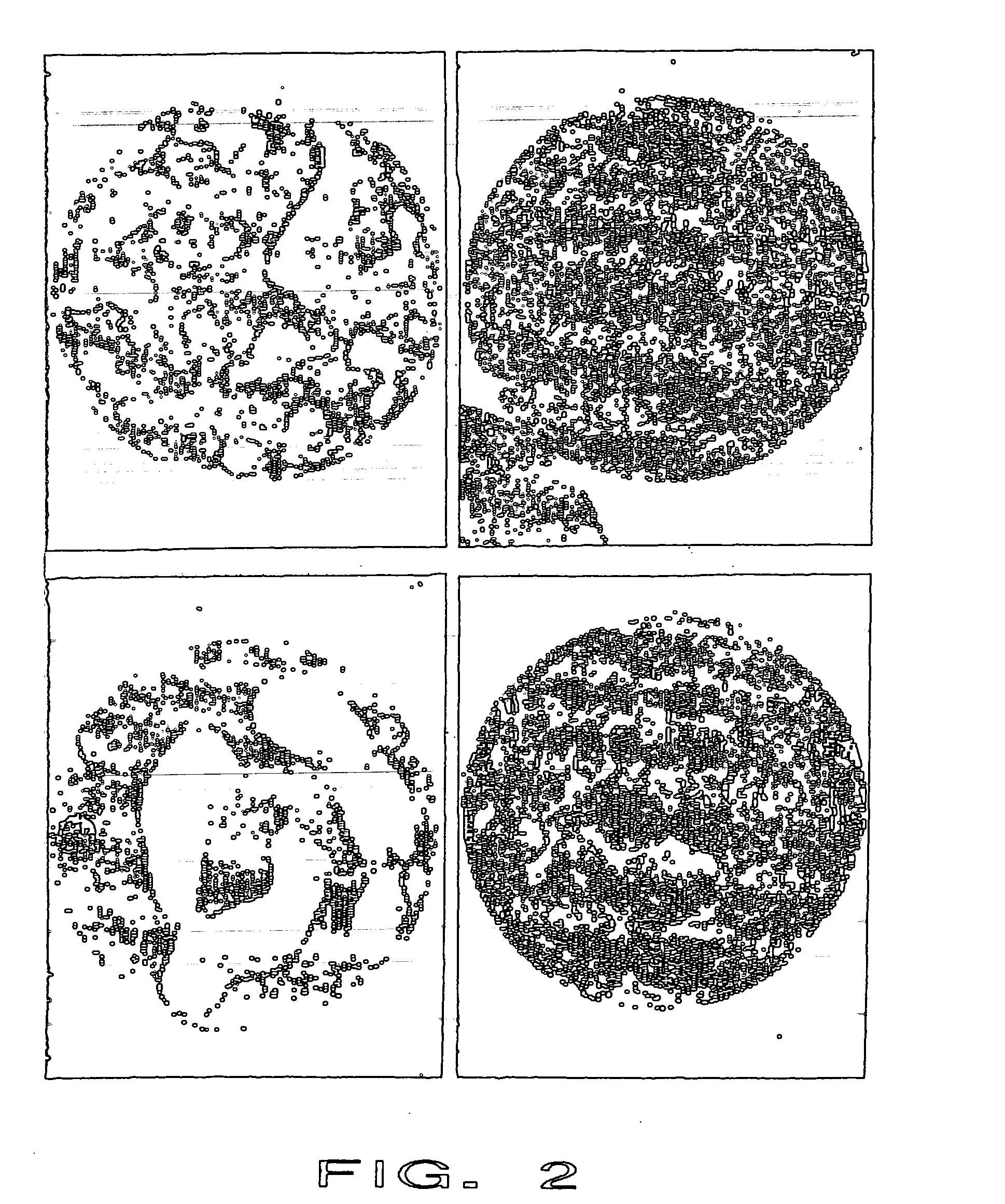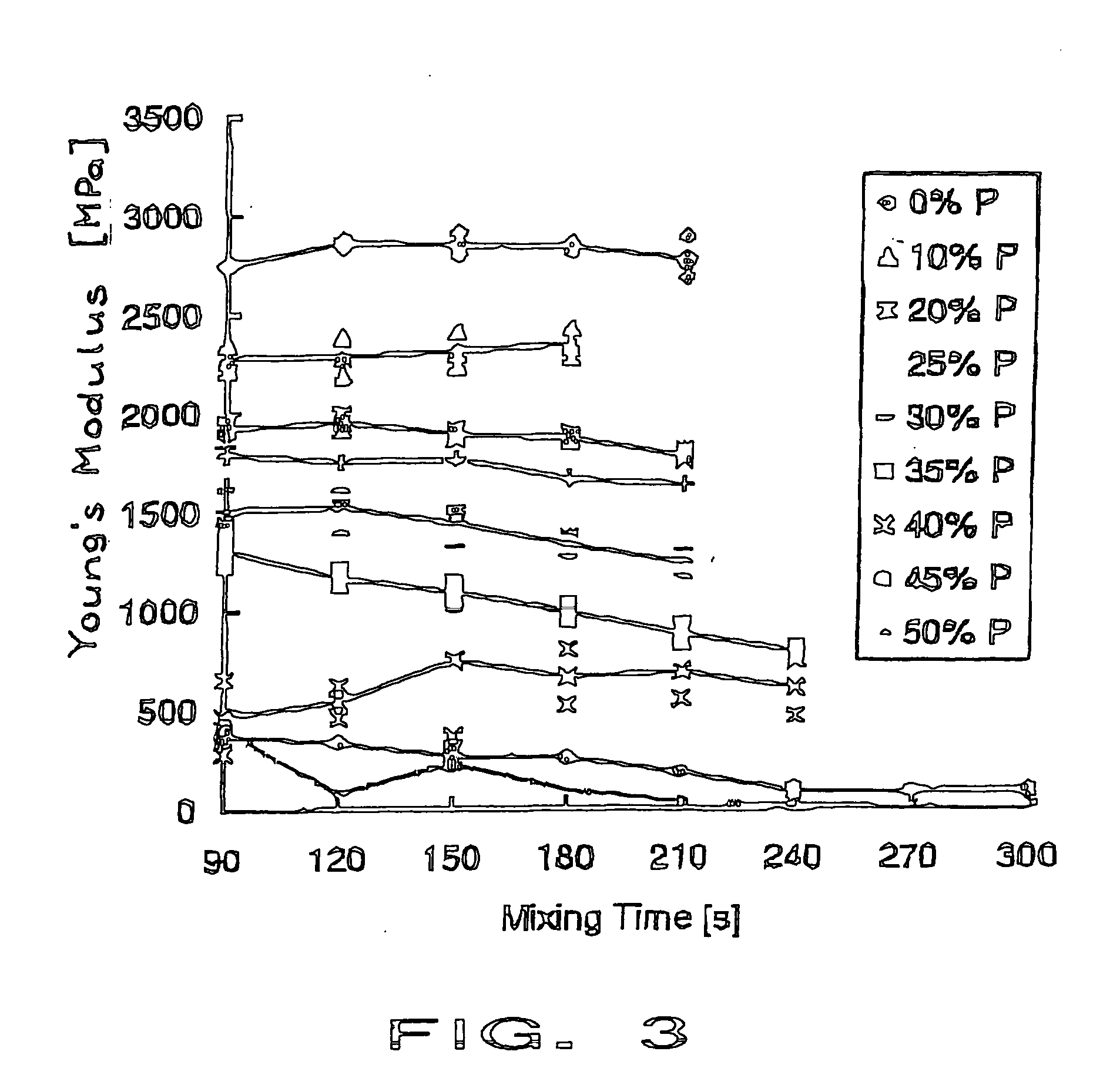Injectable bone-replacement mixture
a bone-replacement mixture and injection technology, applied in the field of injection mixtures, can solve the problems of monomer toxicity, increased fracture rate of adjacent vertebrae, and use of this material, and achieve the effect of good biocompatibility and optimal radio-opacity
- Summary
- Abstract
- Description
- Claims
- Application Information
AI Technical Summary
Benefits of technology
Problems solved by technology
Method used
Image
Examples
example 1
Laboratory
[0071] a) Composition of the first component (powder component of the two-component bone cement): [0072] 98.2 weight-% of polymethylmethacrylate (PMMA) as filler [0073] 1.8 weight-% of benzoyl peroxide as polymerization catalyst [0074] b) Composition of second component (liquid component of the two-component bone cement): [0075] 98.0 weight-% of methylmethacrylate (MMA) as curing monomer [0076] 2.0 weight-% of N,N-dimetyl-p-toluidine as polymerization accelerator [0077] c) Composition of third component [0078] 2 weight-% of hyaluronic acid [0079] 98 weight-% of iopromidium as X-ray contrast agent
[0080] The porosity of the mixture to be injected is achieved by manual mixing of the highly viscous aqueous fraction represented be the third component to the liquid component (PMMA) of the two-component bone cement. The increased water viscosity is obtained by producing a 2% aqueous solution of hyaluronic acid. The mixing procedure ran in the following manner. Firstly the PMMA ...
example 2
Clinical Application
[0084] The identical material of example 1 was mixed and 10-15 ml were injected into the lower thoracic spine of a female cadaver. Injectability, radio-opacity and distribution of the biphasic PMMA-water-compound material were comparable to the commonly used PMMA cements (here Vertebroplastice, DePuy). A homogenous distribution of the whole compound without any phase-separation was seen microscopically. Mechanical compression testing of the intact (and cement filled) vertebral bodies showed an increased failure load compared to the non-treated vertebrae. However, the stiffness did not increase in the same amount as for unmodified PMMA cements.
example 3
Laboratory
[0085] a) Composition of the first component (first component of the two-component calcium phosphate cement): [0086] 10 g of alpha tricalcium phosphate (Ca3(PO4)2), [0087] 0.5 g of Na2HPO4 [0088] 4 ml of water [0089] b) Composition of second component (second component of the two-component calcium phosphate cement): [0090] 6.5 g beta tricalcium phosphate (Ca3(PO4)2), [0091] 3.5 g monocalcium phosphate monohydrate (Ca(H2PO4)2. H2O) [0092] 0.125 g Na2H2P207, and [0093] 4 ml of a 0.1 M magnesium sulfate solution. [0094] c) Composition of third component [0095] 97 weight-% of Lipiodol® (iodised ethyl ester of the fatty acids of poppy-seed oil) [0096] 3 weight-% of hyaluronic acid
PUM
| Property | Measurement | Unit |
|---|---|---|
| weight % | aaaaa | aaaaa |
| viscosity | aaaaa | aaaaa |
| viscosity | aaaaa | aaaaa |
Abstract
Description
Claims
Application Information
 Login to View More
Login to View More - R&D
- Intellectual Property
- Life Sciences
- Materials
- Tech Scout
- Unparalleled Data Quality
- Higher Quality Content
- 60% Fewer Hallucinations
Browse by: Latest US Patents, China's latest patents, Technical Efficacy Thesaurus, Application Domain, Technology Topic, Popular Technical Reports.
© 2025 PatSnap. All rights reserved.Legal|Privacy policy|Modern Slavery Act Transparency Statement|Sitemap|About US| Contact US: help@patsnap.com



